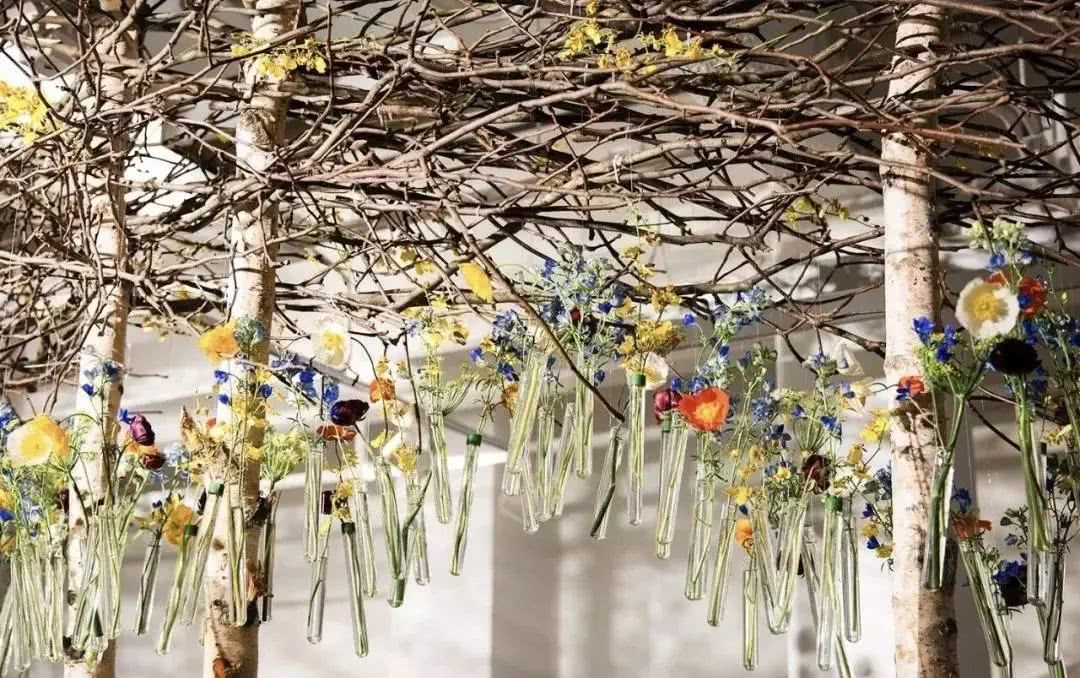It can be done with a fiddle leaf banyan so that the family can suddenly become artistic.

Brain craftsmanship
You have 40 friends who follow the official account!
Ficus chinensis, also known as Ficus chinensis, is an evergreen tree of the genus Ficus in the Moraceae family, named for the expansion of the leaf tip in the shape of a violin.
Qin leaf banyan tall and straight chic, dense leaves, leaves thick green with luster, at a glance lush, vibrant, has a very high ornamental value, is an ideal hall foliage plants. Put it in a corner of the living room and raise the living room immediately.
Next, let's talk about the cultivation and management of Qin leaf banyan.
Qin Ye Rong prefers a warm, moist and sunny environment, while Xiyang is also resistant to overcast.
It has strong adaptability to light and can grow well under bright scattered light. Direct sunlight should be avoided at high temperatures in summer and autumn so as not to burn the leaves and lose their luster.
But should not be too overcast, otherwise the plant growth is thin, should be given 50% shade. The suitable temperature for growth is from 25 ℃ to 35 ℃, dormancy is about 15 ℃, more than 5 ℃ can survive the winter safely, and cold prevention should be paid attention to in winter. In order to improve its cold resistance, in addition to controlling the amount of water in late autumn and winter, phosphorus and potassium fertilizer can be increased about one month before the coming of winter.
Potted soil can be mixed with pastoral soil and peat soil with a small amount of sand, and a small amount of mature base fertilizer should be slightly acidic, and the pH value should be between 6.0 and 7.5.
The pot plant is placed in the semi-shade of the room and can not accept too much direct sunlight. With a strong nature of the original, the choice of location should be long-term consideration, once the location is chosen, do not move at will. Temperature fluctuation is harmful to its growth.
The growth of figs in spring and summer is larger, and more water is needed, so it is necessary to give sufficient water and increase foliar water spraying at the same time. Because its leaves are broad and need a large amount of fertilizer, liquid fertilizer or granular compound fertilizer should be applied for 2 weeks to promote plant growth and thick green leaves, and fertilized every 10 days from the opening of new leaves to the middle of August, mainly nitrogen fertilizer.
Stop fattening when you stop growing or dormant. When the basin is changed every 2-3 years, the stem of figs rarely branched, especially when it is young. The stem should be truncated every spring to destroy the apical dominance of the plant and promote the hidden buds under the cutting mouth to sprout new shoots and form bifurcated branches.
In the process of growth, when the light is too much, too strong and the air is not smooth, it is easy to be harmed by red spiders.
High temperature and dry environment are easy to attract whitefly and scale insects. Short-term temperature fluctuations and too much water in the dormant period will cause leaf spot disease, and the diseased leaves should be removed in serious cases.
The appearance of chloasma at the leaf edge is generally caused by dampness and cold. Leaf wilting is caused by waterlogging and high temperature in winter. If the leaves fall due to poor drainage, the rotten roots should be cut off and the basin should be changed.
Everything is wonderful, there is a praise mall in the flower school.
There are flowers and love, a school of flowers
- Prev

A New Aesthetic Life style-- Flower soft dress
Brainstorm you have 40 friends to follow the official account! The concept of soft clothing is a new "aesthetic way of life" that has sprung up since the 1960s. In addition to the most basic functional decoration in space, floral soft clothing has become a commercial space soft clothing.
- Next

The state of mind is clear at first thought. Knowing how to let go of life is more perfect.
Brainstorm you have 40 friends to follow the official account! Source: brain craftsmanship (may north).
Related
- Wuhan Hospital Iron Tree Blooming Result Was Instantly Frightened by the Gardener Master
- Which variety of camellia is the most fragrant and best? Which one do you like best?
- What is the small blue coat, the breeding methods and matters needing attention of the succulent plant
- Dormancy time and maintenance management of succulent plants during dormancy
- Minas succulent how to raise, Minas succulent plant pictures
- What are the varieties of winter succulent plants
- How to raise succulent plants in twelve rolls? let's take a look at some experience of breeding twelve rolls.
- Attention should be paid to water control for succulent plants during dormant period (winter and summer)
- Watering experience of twelve rolls of succulent plants
- Techniques for fertilizing succulent plants. An article will let you know how to fertilize succulent plants.

